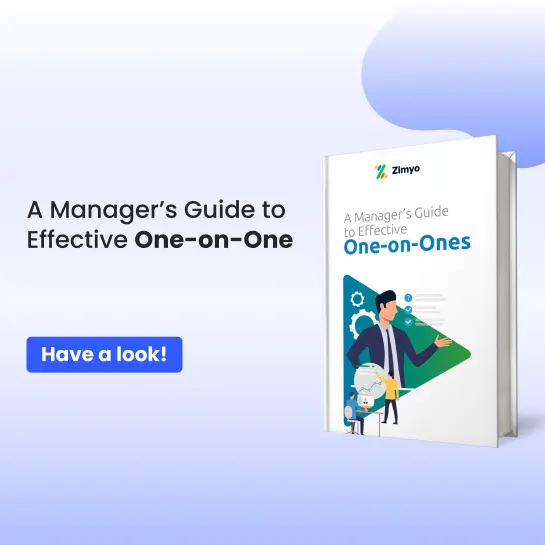A Project Director is a senior-level role responsible for overseeing the planning, execution, and delivery of high-value or multi-functional projects across departments. They ensure alignment with business goals, manage large teams, allocate resources effectively, mitigate risks, and communicate with stakeholders at all levels.
This role demands strategic leadership, cross-functional coordination, and a deep understanding of project governance, budgeting, and long-term business impact.
A Project Director drives outcomes that affect business direction and revenue. These interview questions help assess visionary thinking, team leadership, risk management, financial accountability, and the ability to align complex projects with the organization’s objectives.
Interview Questions and Answering Tips
1. Tell us about your experience managing large-scale projects.
How to Answer:
- Outline years of experience, industries, and scope (budget, team size, regions).
- Highlight notable achievements like under-budget delivery, fast turnaround, and transformation outcomes.
2. How do you prioritize projects when managing a portfolio?
How to Answer:
- Discuss using frameworks like MoSCoW, RICE, or business impact scoring.
- Emphasize balancing strategic objectives with resource availability and stakeholder urgency.
3. What methodologies do you use - Agile, Waterfall, or Hybrid?
How to Answer:
- Explain how you select based on project needs.
- Share examples (e.g., Agile for product rollouts, Waterfall for construction, Hybrid for cross-functional programs).
4. Describe your stakeholder management strategy.
How to Answer:
- Mention mapping stakeholder influence/interest, regular reporting, and transparent communication.
- Use a scenario where trust or alignment helped you unlock project momentum.
5. How do you build and manage high-performing teams across locations?
How to Answer:
- Talk about team structure, clear KPIs, virtual collaboration tools, and motivation practices.
- Highlight conflict resolution or performance turnaround if applicable.
6. What KPIs do you track to measure project success?
How to Answer:
- Key ones: Schedule variance, budget adherence, ROI, quality score, stakeholder satisfaction.
- Share a dashboard or reporting cadence you use to communicate these.
7. Tell us about a time when a project failed. What did you learn?
How to Answer:
- Share openly but focus on reflection, actions taken post-analysis, and how that shaped your leadership moving forward.
- Show accountability and resilience.
8. How do you handle scope creep?
How to Answer:
- Discuss formal change request processes, stakeholder education, and impact analysis.
- Share how you keep delivery teams focused while managing client expectations.
9. What’s your budgeting approach for multimillion-dollar projects?
How to Answer:
- Explain top-down or bottom-up estimating, buffers, contingency planning, and real-time tracking.
- Include tools (MS Project, Primavera, Oracle NetSuite, etc.).
10. How do you ensure risk mitigation throughout the project lifecycle?
How to Answer:
- Mention risk registers, early identification practices, regular reviews, and mitigation planning.
- Include real-world examples of avoided project derailment.
11. Have you ever had to terminate or reboot a project? Why and how?
How to Answer:
- Show decisiveness, root cause analysis, stakeholder buy-in, and how you restructured (if rebooted).
- Focus on long-term value rather than short-term optics.
12. What role does technology play in your project management approach?
How to Answer:
- Discuss using tools for communication, tracking (JIRA, Trello, MS Project), analytics, or real-time dashboards.
- Bonus if you’ve led tech transformation projects.
13. Describe your experience in cross-functional leadership.
How to Answer:
- Share how you bring together engineering, marketing, finance, etc., towards a shared goal.
- Mention empathy, clarity, and conflict management.
14. What is your leadership style? How does it benefit your team?
How to Answer:
- Reflect on your core approach: transformational, servant, situational, etc.
- Give examples of employee development, empowerment, or retention.
15. How do you align project goals with the company’s long-term vision?
How to Answer:
- Show strategic thinking, tying project outcomes to OKRs or board-level goals.
- Mention how you communicate vision and monitor alignment.
16. How do you communicate progress to the executive team or board?
How to Answer:
- Explain using concise dashboards, business-impact updates, and regular cadence (weekly, monthly, quarterly).
- Emphasize clarity and outcome-driven language.
17. Hypothetical: Midway through a project, you lose a major vendor. What do you do?
How to Answer:
- Detail quick risk assessment, alternatives sourcing, escalation, timeline impact mitigation.
- Highlight resilience and contingency planning.
18. Hypothetical: You inherit a delayed and over-budget project. How do you proceed?
How to Answer:
- Start with assessment: team, scope, vendors, deliverables.
- Re-baseline the project, communicate with transparency, and bring leadership visibility.
19. Why do you want to lead projects in our organization?
How to Answer:
- Link company mission with your leadership philosophy and domain expertise.
- Show long-term commitment and value alignment.
20. What’s your approach to developing future project leaders within your team?
How to Answer:
- Mention mentorship, rotation, empowerment, and upskilling.
- Share examples of where your guidance helped someone get promoted or thrive.
21. Do you have any questions for us?
How to Answer:
- Ask about project pipeline, company’s strategic focus areas, decision-making autonomy, or team structure.
- Avoid asking only about perks or salary at this stage.


